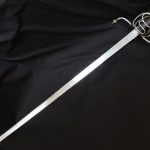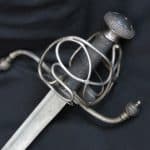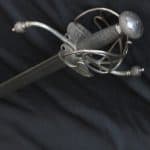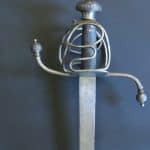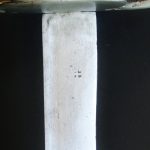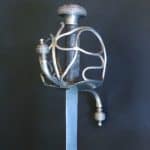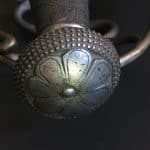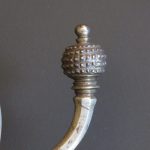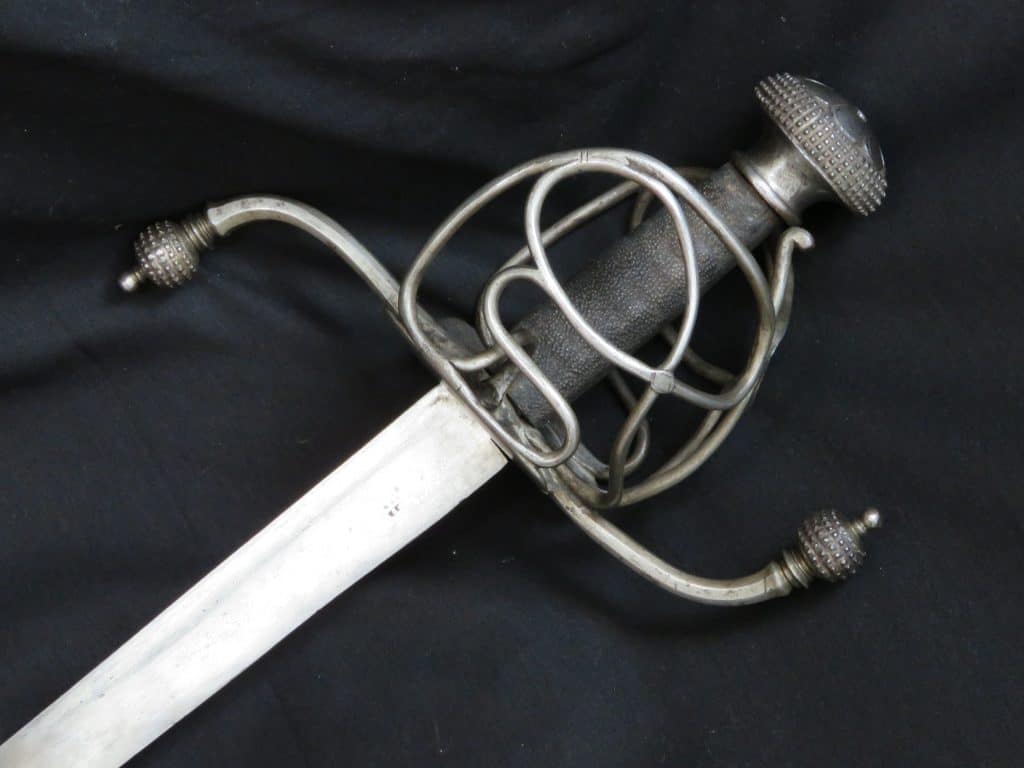
Fine North European Military Sword “Tessak” Dating To Circa 1600
To enquire about this itemplease click here
Price: £6,850
Ref: 003.17
Item Description
A fine North European military sword dating to circa 1600. The hilt type conforms to the general group also known as “Sinclair Sables”, with which the ill-fated Scottish mercenary expedition to Norway was equipped in 1612. Surviving swords are mounted mainly with curved, and more infrequently with straight blades, as is this piece. This is a good example, in original condition, well balanced and practical whilst aesthetically pleasing to the eye. A sword with an identical hilt is illustrated in “The Price Guide To Antique Edged Weapons”, Leslie Southwick, Antique Collectors Club, 1982, page 139, fig 374.
The imposing gently tapering blade is just over 37 inches (94 cm) long and is single edged for half of its length after which it becomes double edged to its tip. The blade is of thick stiff construction capable of being used both for cutting, thrusting through mail and teasing through the joints in plate armour. On one side the worn mark of a cross in raised relief inside a panel is stamped and corresponds with the mark of Wundes Theis a German maker recorded as working in Solingen in the 16th century.
The well executed and complex hilt has a broad quillon span of 9.5 inches (24 cm). The quillons are well formed of octagonal section swelling towards the ends and terminating in delicate waisted bands and large globular terminals with the surfaces filed into a complex trellis in raised relief terminating in small knops. The quillons are vertically counter-curved with the front quillon turned upwards and the rear quillon faced downwards to form a wristguard. Guard plates are attached to the quillon block either side. A thumb loop is applied to one side and the knuckle bow turns upwards from the top of the front quillon to form a scrolled terminal at the pommel.
The solid pommel is mushroom shaped with a flared waisted neck below. It is skilfully incised with a seven sided floret on top and surrounded with similar raised trellis patterns in raised relief to those seen on the quillon terminals. The wooden grip retains its original shagreen cover now blackened with age.
This is an interesting and rare sword which holds a place in the evolution of complex hilt design in the late 16th century. Overall length 43.25 inches (110 cm).

